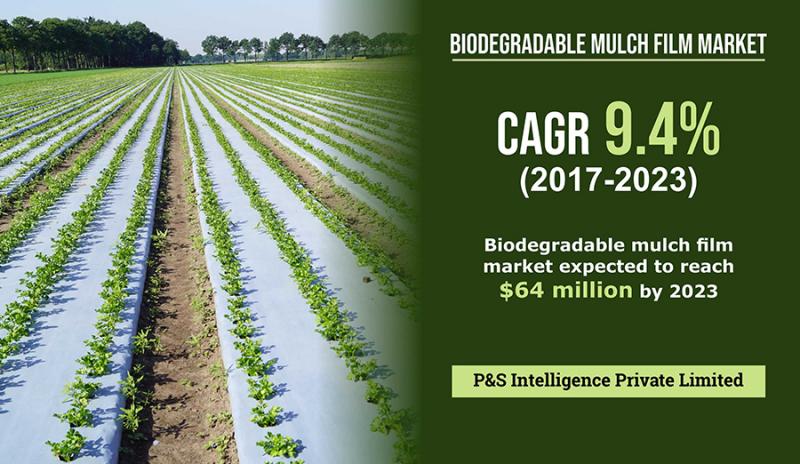What are the market space and limitations by the Biodegradable Mulch Film key sellers?
The global biodegradable mulch film market was valued at $34.1 million in 2016, and it is expected to grow at a CAGR of 9.4% in the coming years. The major types of crops grown using this technique are grains & oilseeds, flowers & plants, and fruits & vegetables. Out of these, such films were used the most for the production of fruits & vegetables in 2016, and the situation is projected to be the same in the near future.
Get a Sample Copy of this Report @ https://www.psmarketresearch.com/market-analysis/biodegradable-mulch-film-market/report-sample
Due to the unavailability of traditional film-forming resins, starch is widely used as a raw material for biodegradable mulch films. The heavy consumption of these starch-based mulch films is predicted to contribute considerably to the growth of the biodegradable mulch film sector, as starch is cost-effective and available in significant amounts as compared to other raw materials, such as polylactic acid and polyhydroxyalkanoate.
The implementation of mulching for the production of fruits & vegetables aids in weed control, moisture retention, higher crop quality, quicker crop maturation, and minimized fertilizer leaching. Polyethylene products account for almost 99.0% of the mulch films used for fruits & vegetables. Peppers, brinjal, cabbage, muskmelon, pineapple, banana, mango, and chili are some crops that are produced through the process of mulching.
Make Enquiry Before Purchase @ https://www.psmarketresearch.com/send-enquiry?enquiry-url=biodegradable-mulch-film-market
Besides, benefits including maintenance of soil structure, weed control, and protection of crops from soil contamination, are highly acknowledged by end users. Moreover, farmers are rapidly shifting their focus toward the adoption of starch-based films, because the usage of inorganic mulch films leads to rising environmental concerns. Mulching done by inorganic materials affects human health and the environment, as these are produced from petroleum-based plastics, specially polyethylene, which causes waste disposal issues. Hence, the growing sales of starch-based mulch films are expected to accelerate the sector progress.
Various government regulations are also encouraging the use of biodegradable materials. According to Council Regulation No. 2092/91 (European Commission, 1991), European farmers are not allowed to use inorganic mulching materials, such as polyethylene, for crop production. Moreover, as per the standards for degradation in compost (ISO 17088 and ASTM D6400), at least 90.0% of the organic carbon needs to be converted to CO2, which leaves room for only up to 10.0% of the organic carbon to remain. Thus, the adoption of the inorganic mulching technique is reduced because of these regulations.
